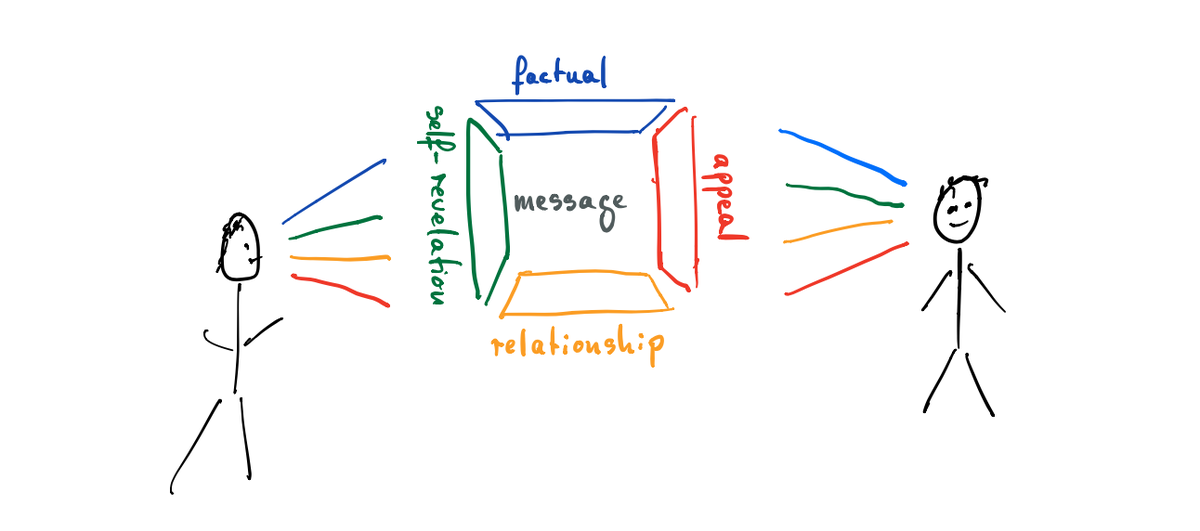This feels relevant to @Twitter ...
Friedemann Schulz von Thun came up with a way of clarifying things people say.
In his scheme, any statement is dissected into four components
* factual
* self-revelation
* relationship
* appeal

The speaker, intentionally or not, sends messages on all of these levels.
The listener, intentionally or not, hears messages on all of these levels.
Communication problems arise when we confuse different levels. My intention may be to make a purely factual statement, and I may fail to consider its relationship content. That can be hurtful.
The factual level is relatively easily communicated in a tweet.
The other levels rely on tone, body language, facial expression: things that are missing on @twitter. That makes misunderstandings on those levels likely, and they are the emotional ones; the ones that can hurt.
So before we jump to emotional conclusions based on a tweet, let's take a deep breath: on here, we only ever receive a digitized fragment of the full message. How we as readers choose to complete the fragment depends on things beyond the control of the writer.
What seems to help is assuming good intentions. Communication is not really possible without believing in the good intentions of the other party.
When I learned about Schulz von Thun's scheme, at school, our teacher used the example of the driving couple.
An English classmate (this was in Germany) started giggling: "My dad said to my mum yesterday 'Darling, all the other cars seem to be driving on the right.'"




